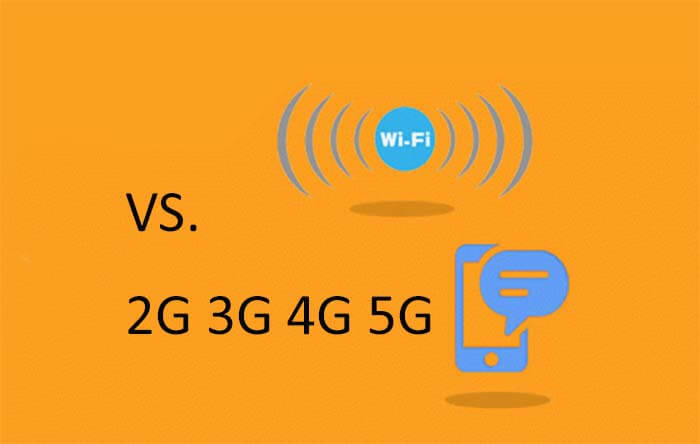
After the read of WiFi vs. Cellular, Is WiFi Better Than Cellular? You will know:
WiFi vs. Cellular, What is the difference between WiFi and cellular?
WiFi vs. Cellular, Is Wi-Fi better than cellular?
WiFi vs. Cellular, What is the cellular network?
WiFi vs. Cellular, What is a Wi-Fi network?
WiFi vs. Cellular applications
5G WiFi vs. cellular 5G, What is the difference between a 5G network and a 5G WiFi?
Which is better, Wifi or mobile data cellular network?
The important differences between WiFi and cellular networks
Apple watch Wifi vs. cellular, What is the difference between cellular and Wi-Fi Apple Watch?
Wifi Ipad vs. cellular, Is Ipad cellular worth it?
Apple watch Wifi vs. cellular, What is the difference between cellular and Wi-Fi Apple Watch?
Wifi vs. cellular data, Which one do you prefer?
WiFi vs. cellular, What is the difference between WiFi and cellular?
WiFi vs. Cellular, the difference between a public mobile communication cellular network and Wifi is that one is a WAN technology and the other is a LAN technology. Cellular communication replaces the regional system, so it is naturally a WAN technology, while wifi technology is a wireless LAN technology in the communication industry.
WiFi vs. Cellular, Is Wi-Fi better than cellular?
The cellular network uses one-way transmission, while the wifi network can transmit in multiple directions, so the quality and speed of cellular network transmission are far greater than wifi.
WiFi vs. Cellular, What is a cellular network?
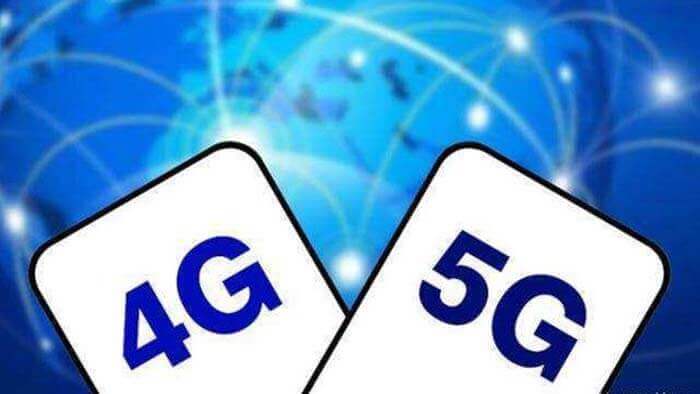
Cellular networks are mobile 2G/3G/4G/5G networks used to access networks over a wide area. Mobile devices are connected to their base stations using an air interface based on physical and link layer protocols. Each base station is connected to a mobile switching center that connects the mobile devices to the WAN, helping to establish a network for calls and mobility.
There are various technology types of cellular networks. Currently, the mainstream cellular network types worldwide include GSM in the 2G era, WCDMA/CDMA2000 in the 3G era, LTE/LTE-A in the 4G era, and the new 5G era, etc.
Cellular mobile network is the basis of mobile communication technology

The initial public radio communications, use a large area of strong coverage of the technology. That era of radio stations are very high transmitting power, and the need to build a very high antenna tower, the signal coverage area is also relatively wide, and usually can cover dozens or even hundreds of kilometers, more typical is that we listen to the radio station and the early use of antenna reception of television programs.
In 1947, the U.S. Bell Labs proposed the idea of cellular mobile communication technology, in 1977 to achieve the feasibility of the verification, and in 1978 the technology was verified on the AMPS system. AMPS is also the U.S. 1G technology, we used to use big brother this technology, AMPS is also the world’s most widely deployed 1G technology.
Cellular mobile communication proposed the concept of the cellular system, in the original coverage area, is divided into multiple cells, the center of each cell building a base station so that each base station can cover a very close distance, and the terminal can communicate with the nearest cell, reducing the transmit power of the terminal, so that the terminal miniaturization can be achieved, which eventually led to the introduction of cell phones.
Since the signal coverage of these cells is similar to a hexagon, the entire network structure is similar to a honeycomb, hence the name cellular communication.
Cellular communication is to replace the original large area system, so it is naturally a wide area network technology.
Cellular communication is a communication technology with a large coverage radius, so it is a WAN technology naturally because cellular communication replaces the large area system to achieve the technical performance of the original large area system.
Cellular mobile communication and TDMA, FDMA, CDMA, OFDMA, and other multiplexing technologies are combined to form our mobile communication network now. The cellular network consists of three main parts: mobile station, base station subsystem, and network subsystem.
Mobile stations are network terminal devices such as cell phones, smart watches that can be fitted with SIM cards, or some cellular industrial control devices.
The base station subsystem includes tower-type communication base stations, fiber optic and other dedicated networks, wireless transceiver equipment, and a large number of digital devices.
The network subsystem can be seen as a converter between the wireless network and the wired network.
Advantages of cellular networks
Cellular technology has been the basis of mobile communication since the invention of this technology. As a result, mobile communication is also basically equivalent to cellular communication.
There are some features of cellular networks that form part of the basis for the development of mobile communications. For example, frequency multiplexing, allows limited frequency resources to be reused within a certain range.
Another example is cell splitting, which allows the coverage of a single cell to be reduced when there is not enough capacity to divide a larger number of cells, thus further increasing the efficiency of frequency utilization.
WiFi vs. Cellular, What is a Wi-Fi network?
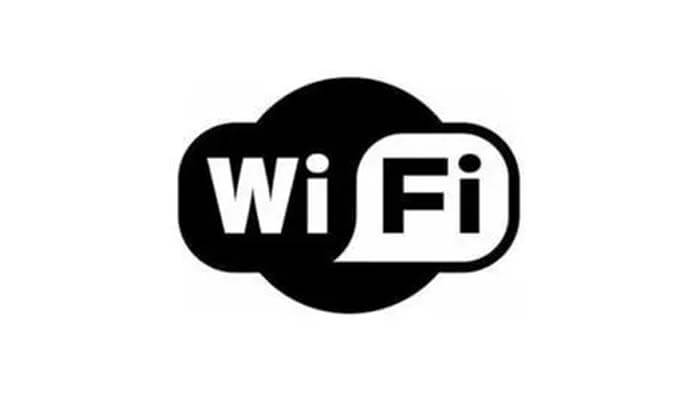
WiFi is a local area network technology. WiFi stands for wireless fidelity.
It is used to create a wireless network of devices to access the Internet. it follows the IEEE 802.11 standard. Each WiFi device is connected to a WLAN network to access the Internet and wireless access point AP.
WiFi technology is a local area network technology in the communication industry and it belongs to wireless LAN technology. WiFi technology was introduced to complement wired LANs and is also considered an extension technology to fixed networks.
WiFi technology has evolved over the years, from the original IEEE 802.11b to the current IEEE 802.11ax, which is also known as WiFi 6, which is very hot now.
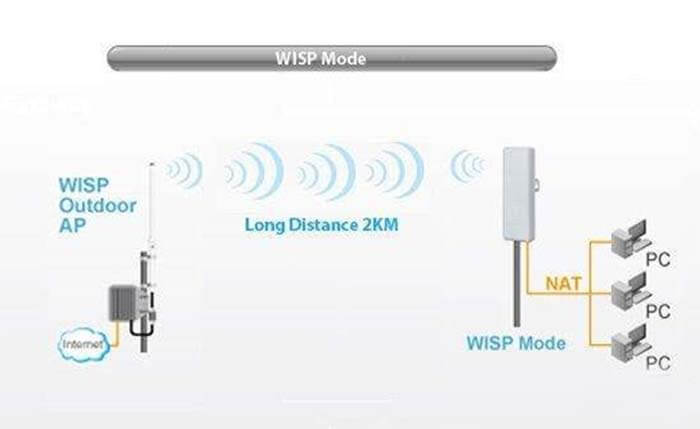
WiFi vs. Cellular applications
Cellular mobile communication networks and WiFi are used in different scenarios.
Cellular mobile communication networks, which require operators to be responsible for the construction, maintenance, and operation of the network, need to invest a lot of money. Cellular mobile communication networks ensure system capacity, while there are relatively high reliability and mobility requirements, which are the shortcomings of WiFi technology.
In the 5G era, cellular mobile communication networks will compete with WiFi for some application scenarios.
5G is an era of industry applications, a large number of industrial applications in the indoor area, which also makes the mobile communication network begin to enter the original application of WiFi scenarios.
The 5G era will have a large number of small base stations for indoor deployment, which will be a great challenge to traditional WiFi technology. In the future, there may be no need to deploy WiFi products such as wireless routers inside the home, and small base stations provided by operators will be responsible for the user’s data service needs indoors.
WiFi vs. cellular, Wi-Fi from the inside out and cellular networks from the outside in
Many users have gotten into the habit of putting WiFi first. More than 50% of traffic on cell phones is carried by WiFi, and tablets and laptops access the network almost exclusively through WiFi. WiFi carries at least an order of magnitude more data traffic than cellular networks, and perhaps even two orders of magnitude more.
Users typically have only one terminal connected via the cellular system, but often have five or more WiFi-connected devices. In countries with high Internet penetration, the number of WiFi APs may exceed the number of cellular base stations by 300 times.
Hotels and office buildings without WiFi coverage are unimaginable, and cellular communications play a key role in providing signal coverage for mobile users and will continue to be an integral part of the communications infrastructure for the foreseeable future.
There is a good reason to give preference to WiFi in most cases. Cellular communications are expensive and have limited capacity. WiFi, on the other hand, is nearly free, while the capacity and data rates are far greater than those of cellular communications.
The reason for this difference is not the technology or the carrier frequency band – both use nearly identical technologies (such as ODFM) and use carrier frequency bands with similar propagation characteristics (5G’s band is fairly close to WiFi’s). The difference comes from the deployment model of the network.
WiFi uses an inside out model, where the signal source is deployed inside the building to ensure that users inside the building receive the strongest signal, while the exterior walls of the building block some of the radio spillovers, thus reducing interference to outside users.
In contrast, a cellular system with a signal source located outside the building must break through the external walls, providing only attenuated signals and reduced system capacity to indoor users, and also causing interference between outdoor base stations.
Since most of the data usage occurs inside the building, the inside-out networking mode of WiFi provides much more efficient signal coverage and usage than the outside-in mode of cellular systems.
5G Wifi vs. 5G Cellular
In theory, cellular systems could also be deployed indoors, using microcell base stations or femtocells, but the scale of the problems and challenges encountered in this model is beyond the capabilities of a few cellular manufacturers.
In contrast, WiFi systems have solved these problems better by leveraging the spontaneous installation of personalized WiFi APs by thousands of users.
WiFi has now gained widespread adoption indoors, weakening the logical basis for building indoor cellular. There is even a trend of spontaneous use of single WiFi-enabled terminals, as users realize that it is possible to complete network connectivity entirely over WiFi. This is not to say that WiFi can replace cellular.
WiFi will never be able to provide network connectivity in suburban areas, provide network connectivity for outdoor roads, or provide network connectivity for the majority of people who are on the move. Cellular is an integral part of the ubiquitous communications system we need.
Calls to improve signal coverage for wireless communications have been largely directed at cellular networks. Many people have tried to cover entire cities with WiFi. Such attempts have failed because no matter what form was used, there were always too many challenges and not enough revenue returns.
The advent of WiFi 6, coupled with the upcoming WiFi 7, is bringing WiFi back to center stage. d, but it would be wise to limit WiFi to existing areas and not expand into cellular coverage. The area where WiFi can best be used to its advantage is indoors.
On the other hand, one of the concerns with 5G is to provide high-speed data transmission and increased system capacity in densely populated central urban areas.
Relying solely on millimeter waves and small base stations to increase capacity in central urban areas may be less cost-effective and will not easily meet the service experience requirements of indoor users.
Clearly, 5G and WiFi can complement each other very well.
From a technology perspective, certain technical features of 5G, such as the separation of the control plane and user data plane, and the proven mobility switching mechanism can well help achieve seamless interoperability between 5G and WiFi.
Software-defined networking (SDN) and network function virtualization (NFV) can make the integration of 5G and WiFi with third-party systems easier and faster.
Another technology impacting 5G and WiFi synergy is Licensed Band Assisted Access (LAA). Network operators can use LAA technology to increase data throughput by aggregating licensed and unlicensed bands for use together.
Typically, the control channel is located in the licensed band, while data traffic sometimes uses the unlicensed band, such as the 5 GHz band used by WiFi today.
The terminal is responsible for deciding where to get the data traffic from.
The 5G LAA licensed band or the WiFi band.
Both use the same technology: OFDMA.
LAA allows operators to better control the efficiency of terminal usage and more effectively enable close cooperation between WiFi and cellular.
From a purely technical point of view, voice calls can easily be made between two terminals that can only connect to WiFi and not to cellular.
But voice calls between pure WiFi terminals and regular cellular terminals or landlines, which are more common requirements, are more complex.
WiFi terminals must be able to address cellular terminals and vice versa. Reassigning numbers to WiFi and cellular terminals using a completely new numbering table is the first solution that comes to mind, but this can cause a lot of inconvenience to users.
Another more practical approach is the TS 23.402 standard developed by 3GPP in 2018.
According to this standard, cellular phones connect to the cellular network through a secure tunnel in the WiFi network. Once this connection is established, cellular phones are able to make and receive calls over the WiFi network, the same way they do over the cellular network.
This solution requires a software upgrade to the endpoint, as well as the deployment of a secure gateway by the cellular carrier, and VoIP support.
Overall, WiFi and cellular are partners that complement each other’s strengths and weaknesses. Indoors, cellular is the alternative that users use when they can’t find a WiFi signal; outdoors, cellular can extend network connectivity.
Here are some important differences between WiFi and cellular networks
No. | Key | Cellular network | Wi-Fi network |
1 | Internet | Cellular networks are based on mobile phones/devices that use cellular signals to connect to the Internet. | Wifi uses radio frequency waves to provide high-speed Internet access to connected devices. |
2 | Standard | Cellular networks are based on cell phones and use networks distributed over a wide area. | WiFi is a wireless network technology that follows the IEEE 802.11 standard. |
3 | Range | Cellular networks depend on the availability of network ranges. | Wifi has a limited range. |
4 | Data Plans | Cell phones have a plan to consume data. | Wifi has no limitations or plans for the data that can be used. |
5 | Speed | Compared to WiFi, cellular network access is usually slower. | WiFi is much faster compared to cellular networks. |
Which is better, Wifi or mobile data cellular network?
As far as the description is concerned, Wifi is better. The reasons are as follows
- Wifi refers to wifi internet access and cellular network refers to cellular card traffic internet access. wifi issues, no billing.
- Wifi uses broadband, which is more stable and efficient.
5G WiFi vs. cellular 5G, What is the difference between a 5G network and a 5G WiFi?
5G WiFi refers to WiFi that runs in the 5Ghz radio wave band, but to be more precise it should be WiFi that uses 802.11ac protocol and runs in the 5Ghz band.
The higher wireless transmission speed is the most important feature of 5G WiFi. The industry believes that the entry-level speed of 5G WiFi is 433Mbps, which is at least three times the current Wi-Fi rate, and some high-performance 5G WiFi can also reach more than 1Gbps.
5G WiFi runs on a band above 5Ghz, and the frequency band can bring different characteristics. 2.4 Ghz band is superior in penetrating walls and bypassing obstacles, but relatively weaker in anti-interference ability; while the 5G band has a higher wireless transmission rate, stronger anti-interference ability, as well as a stronger wireless signal, lower latency, and higher stability.
The 5G WiFi runs in the high-frequency band above 5GHz, which also has faster transmission efficiency, lower latency, and stronger anti-interference capability.
How high is the transmission rate of 5G WIFI?
The information shows that 5G WiFi broadband can be increased to 40MHz or even 80MHz or higher, and the transmission speed is increased up to 1Gbps, which can transmit about 125MB of content per second.
In addition, 5G WiFi is 802.11ac with a chip that works at frequency 5GHz and can cover both 5GHz and 2.4GHz bands.
In addition to being faster, it improves the problem of small wireless signal coverage, but 5GHz has stronger attenuation and less ability to bypass obstacles than 2.4GHz.
What is a 5G network?
The 5G in the 5G network refers not to the frequency band, but to the abbreviation of the word “Generation”, 5G, which translates to the 5th generation. In other words, 5G literally means the 5th generation of mobile communication technology.
The first generation is analog technology; the second generation realized digital voice communication; the third generation is the familiar 3G technology, characterized by multimedia communication; the fourth generation is being rolled out 4G technology, whose communication rate is greatly improved, marking the entry of wireless broadband era.
For the fifth generation, most technical experts prefer the following view: 5G is the inevitable evolution of 4G technology. 5G technology is a new combination of existing technologies, which is built on the re-evolution of 4G technology and updates. 5G is a re-evolution on the basis of 4G. It has reached amazing improvements in transmission rate, latency, number of connections, and connectivity.
5G WiFi and 5G network are not a concept in themselves. 5G WiFi is still a product of the 4G era, but a new technology that emerged in the 4G era, while the 5G network is a replacement and evolution of the 4G network, and the two are not comparable.
Wifi Ipad vs. cellular, Is Ipad cellular worth it?
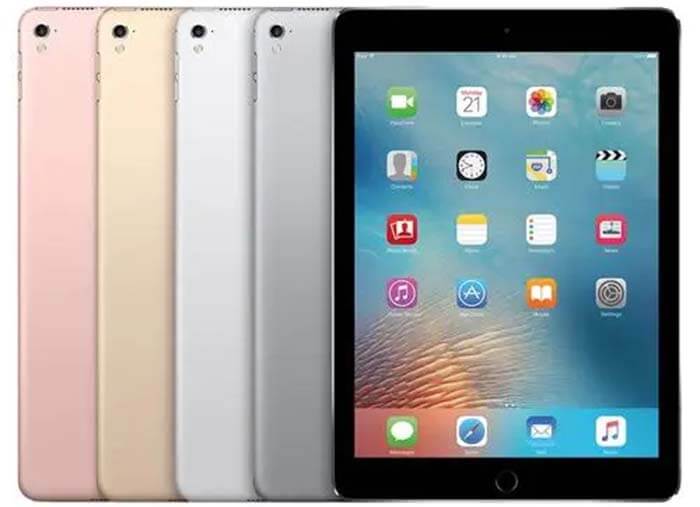
When we buy a tablet PC or a 2-in-1 PC, we will encounter the choice between the cellular version and the wifi version.
The main difference between the cellular version and the wifi version is that the cellular version supports card insertion, similar to the cell phone card insertion to use the mobile data network anytime and anywhere.
The wifi version of the use of the scene is more limited, only using WiFi or mobile hotspot network.
Ipad Wifi vs. cellular, different ways to access the Internet
The cellular version supports card insertion and can use mobile traffic network anytime, anywhere.
WiFi version: only use WiFi network, or mobile hotspot.
Ipad Wifi vs. cellular, different price
With the maturity of 4G technology, now WLAN + Cellular version of the iPad tablet computer, not only supports Wifi network but also can be installed card, support 4G network (support 4G triple play), the product price is also more expensive than the WLAN version. There are even products that can be about a thousand dollars more expensive.
Ipad Wifi vs. cellular, different hot features
The cellular version of the iPad uses a 3G/4G card after the Internet, you can set up hotspots through WIFI, allowing other devices to connect to the Internet, while the WLAN version of the iPad does not have this function.
Ipad Wifi vs. cellular, different appearance
The only difference in appearance is that the cellular version has more card slots.
Apart from these four differences, there is no difference between the cellular and WiFi versions in terms of other configurations.
Apple watch Wifi vs. cellular, What is the difference between cellular and Wi-Fi Apple Watch?
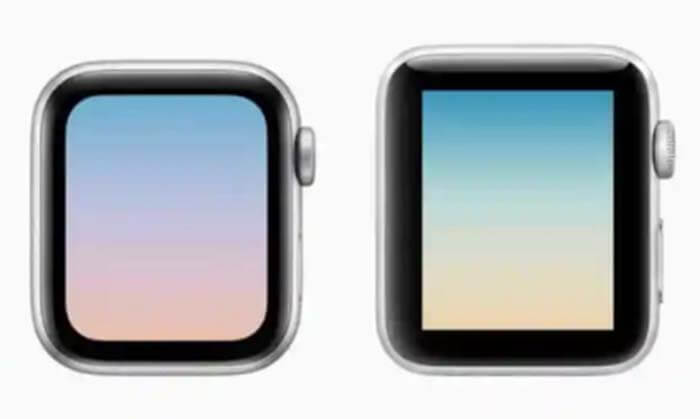
What is the difference between the Apple Watch wifi version and the cellular version?
One of the main differences between the Apple Watch Honeycomb and the regular version is the size of the case, which is generally larger than the regular version.
There is also a difference in terms of memory, generally, the Apple Watch Honeycomb version has more memory than the regular version.
In terms of function, the cellular version can achieve independent making/receiving calls, sending and receiving messages, etc., without relying on the phone and becoming more independent, while the normal version functions like the previous generations, receiving/receiving calls, sending and receiving SMS messages, etc. still requires Bluetooth connection to the phone to achieve.
Apple Watch AppleWatch has three versions: Standard, Sport, and Editon. The prices of the three versions are very different, and the biggest difference is the material and strap.
Apple watch GPS vs. cellular, What is the difference between Apple watch cellular and GPS?
The cellular version is better because it supports internet access and the material is better, but the price is more expensive.
Apple watch GPS vs. cellular, the difference in network support
The difference between the cellular version and the GPS version is only in the network connection support. The cellular version can connect to the mobile network via 4G LTE because of the built-in eSIM, and it also supports the GPS positioning system and WiFi connection of the GPS version.
Apple watch GPS vs. cellular, the Body material difference
In addition to the above differences, the main difference of the stainless steel version is that the watch body is made of stainless steel, and the screen protector is replaced by a sapphire glass mirror from the original reinforced glass, but the back sensor and the watch body material are the same.
Apple watch GPS vs. cellular, the Hardware differences
On top of the hardware, both versions of Series4 use the S4 chip, have 16GB of storage space, are equipped with a sapphire glass panel and ceramic back, and water resistance and battery life are the same.
The difference between the two in Series3
The cellular version and GPS version is in addition to the Series4 two versions of the same network connection are different, the cellular version also compared to the GPS version with 8GB larger 16GB storage capacity, and the cellular version of the back sensor cover for ceramic material, the GPS version is made of plastic.
Wifi vs. cellular data, Which one do you prefer?
Cognitively speaking, wifi is generally a bit faster than mobile data, but with the accelerated layout of 4G for cell phones, the speed is getting faster and faster. Now 5G is emerging with peak theoretical transmission speeds of up to tens of Gb per second, which is hundreds of times faster than the transmission speed of 4G networks.
However, for the time being, wifi speeds compete fiercely with mobile data speeds, with wifi being more dominant in places like China, Singapore, South Korea, and the US; while LTE speeds are faster in some African, European, Latin American, and Middle Eastern countries, and in Lebanon, mobile data downlink speeds are often 25Mbps faster than WiFi, a very significant gap.
Besides this WiFi vs. Cellular, Is WiFi Better Than Cellular article, you may also be interested in the below articles.
4G vs. 5G: What is the difference between 4G and 5G?
How to Choose the Best Antenna for Lora?
